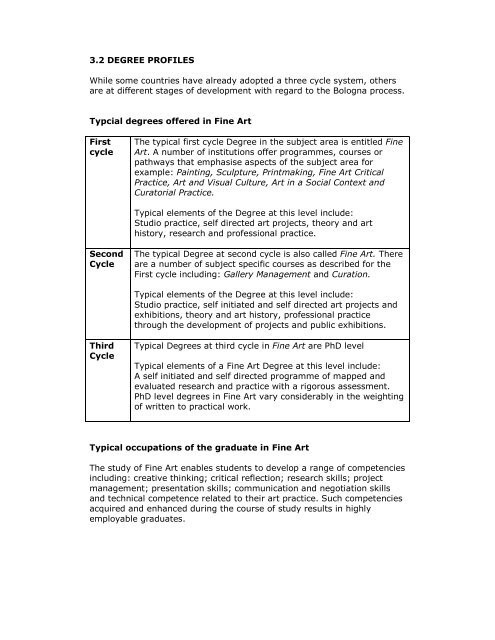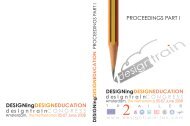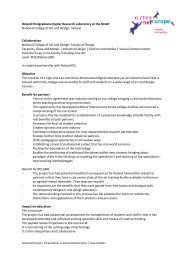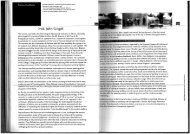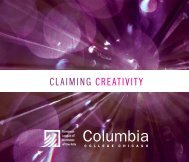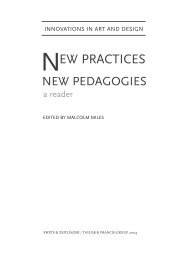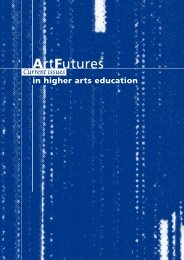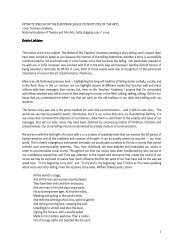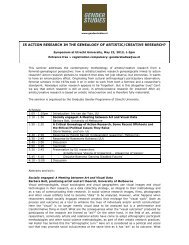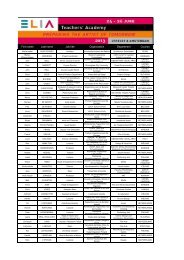CONTENTS FINE ART TUNING DOCUMENT - ELIA
CONTENTS FINE ART TUNING DOCUMENT - ELIA
CONTENTS FINE ART TUNING DOCUMENT - ELIA
Create successful ePaper yourself
Turn your PDF publications into a flip-book with our unique Google optimized e-Paper software.
3.2 DEGREE PROFILES<br />
While some countries have already adopted a three cycle system, others<br />
are at different stages of development with regard to the Bologna process.<br />
Typcial degrees offered in Fine Art<br />
First<br />
cycle<br />
Second<br />
Cycle<br />
Third<br />
Cycle<br />
The typical first cycle Degree in the subject area is entitled Fine<br />
Art. A number of institutions offer programmes, courses or<br />
pathways that emphasise aspects of the subject area for<br />
example: Painting, Sculpture, Printmaking, Fine Art Critical<br />
Practice, Art and Visual Culture, Art in a Social Context and<br />
Curatorial Practice.<br />
Typical elements of the Degree at this level include:<br />
Studio practice, self directed art projects, theory and art<br />
history, research and professional practice.<br />
The typical Degree at second cycle is also called Fine Art. There<br />
are a number of subject specific courses as described for the<br />
First cycle including: Gallery Management and Curation.<br />
Typical elements of the Degree at this level include:<br />
Studio practice, self initiated and self directed art projects and<br />
exhibitions, theory and art history, professional practice<br />
through the development of projects and public exhibitions.<br />
Typical Degrees at third cycle in Fine Art are PhD level<br />
Typical elements of a Fine Art Degree at this level include:<br />
A self initiated and self directed programme of mapped and<br />
evaluated research and practice with a rigorous assessment.<br />
PhD level degrees in Fine Art vary considerably in the weighting<br />
of written to practical work.<br />
Typical occupations of the graduate in Fine Art<br />
The study of Fine Art enables students to develop a range of competencies<br />
including: creative thinking; critical reflection; research skills; project<br />
management; presentation skills; communication and negotiation skills<br />
and technical competence related to their art practice. Such competencies<br />
acquired and enhanced during the course of study results in highly<br />
employable graduates.


